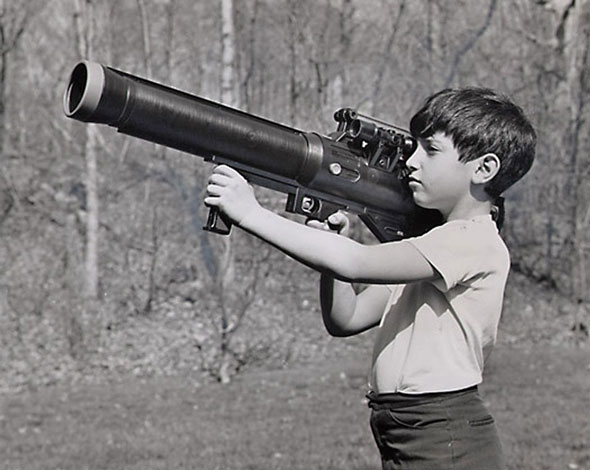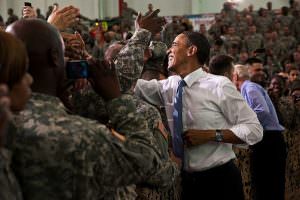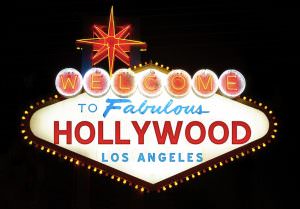Toxic Masculinity Is Killing Us in Many Ways
Part of the lethal problem is that the firearms industry and the National Rifle Association have cultivated a culture of gun-powered macho fantasies. Flickr
Flickr
After every mass shooting—and sadly, there are so many that we have become numb to them—there’s an inevitable combing through the shooter’s past to see what could have motivated him.
We learned a lot about Omar Mateen, who shot up an Orlando, Florida, gay nightclub called Pulse in 2016. His ex-wife describes a man who was controlling and abusive. A colleague says he was always using racial and sexual slurs and “talked about killing people all the time.” Both his ex-wife and his father describe him as homophobic. He was clearly fond of guns, having not one, but two concealed carry licenses. He was investigated by the FBI in 2013 for making threats to a coworker.
Stephen Paddock, who killed nearly 60 people at a country-western concert in 2017, also loved guns, amassing several dozen. He was a massive gambler who loved freebies but was rudely unwilling to tip waitresses. He dressed down his girlfriend in public for no reason, and was described by people who knew him as rigid, uncompromising, arrogant and entitled.
Elliot Rodger, who killed six and injured 14 in Isla Vista, California, was also entitled, and released a video and a manifesto explaining why he deserved female attention—and committed murder as revenge because he did not get it. And so on and so forth, with one killer after another.
There is a common theme here: Toxic masculinity.
Every time feminists talk about toxic masculinity, there is a chorus of whiny dudes who will immediately assume—or pretend to assume—that feminists are condemning all masculinity, even though the modifier “toxic” inherently suggests that there are forms of masculinity that are not toxic.
So, to be excruciatingly clear, toxic masculinity is a specific model of manhood, geared toward dominance and control. It’s a manhood that views women and LGBT people as inferior, sees sex as an act not of affection but domination, and which valorizes violence as the way to prove one’s self to the world.
For obvious political reasons, conservatives try to reduce conversations about public mass murder to “radical Islam,” the suggestion being that these impulses are inherent to Islam and that Christianity does not cause such violence. This, of course, is hoary nonsense, as there is a long and ignoble history of Christian-identified men, caught up in the cult of toxic masculinity, sowing discord and causing violence in our country: The gun-toting militiamen that caused a showdown in Oregon, the self-appointed border patrol called the Minutemen that again made news when their founder was convicted of child molestation, men who attack abortion clinics and providers.
Toxic masculinity aspires to toughness but is, in fact, an ideology of living in fear: The fear of ever seeming soft, tender, weak, or somehow less than manly. This insecurity is perhaps the most stalwart defining feature of toxic masculinity, and examples are endless. Donald Trump flipping out when someone teases him about his small fingers. (Or about anything, really.) The ludicrously long and shaggy beards on “Duck Dynasty,” meant to stave off any connection to the dreaded feminine with a thicket of hair. The emergence of the term “cuckservative,” flung around by hardline right-wingers to suggest that insufficient racism is somehow emasculating. Conservatives absolutely melting down about an Obamacare ad that suggested, gasp, sometimes men wear pajamas. (This ad traumatized them so much that many conservative pundits are still freaking out, years after the fact, that the Obama administration dared suggest the emasculating fabric of flannel pajamas ever touched the skin of the American male.)
If toxic masculinity was just about men posturing around each other in a comical fashion, that would be one thing, but this persistent pressure to constantly be proving manhood and warding off anything considered feminine or emasculating is the main reason why we have so many damn shootings in the United States. Whether it’s Islamic terrorism or Columbine-style shootings or, as is the case with some of the most common but least covered mass shootings, an act of domestic violence by a man who would rather kill his family than lose control, the common theme is this toxic masculinity, a desire on the part of the shooter to show off how much power and control he has, to take male dominance to the level of exerting control over life and death itself.
Toxic masculinity is also the reason it’s so easy for men with major issues to get a hold of the high-powered weaponry necessary to commit these crimes. Sure, the pro-gun movement likes to roll out a bunch of half-baked pseudo-arguments pretending at rationality to justify the lack of gun control in this country, but really, the emotional selling point of guns is that they feed the cult of toxic masculinity. Being able to stockpile weapons and have ever bigger and scarier-looking guns is straightforward and undeniable overcompensation for insecure men, who are trying to prove what manly men they are.
This issue also goes back to social and cultural forces, especially the way that the gun industry and the NRA have cultivated a culture of gun-powered macho power fantasies. The number of people who own guns has steadily declined in recent years, so the gun industry has shifted its marketing tactics.
“It’s clear that the gun industry is marketing to people who are already their customer base and finding new and novel and unfortunately more dangerous weapons to sell them,” Lindsay Nichols, federal policy director for the Law Center to Prevent Gun Violence, explained to me.
The gun industry uses a carrot-and-stick approach to get this done. The carrot is the power fantasy—the idea that having a whole bunch of guns will make you feel manly and tough. Gun advertising also emphasizes the diverse range of technical attributes available, appealing to the “collect-’em-all” mentality. On the stick front, the NRA and other gun-industry propaganda arms have heavily promoted visions of social collapse and discord to make gun owners feel they have to buy enough weapons to start their own personal army in self-defense.
“The gun industry and the NRA are profiting off a sense of fear,” Kris Brown, the co-president of the Brady Campaign, told me.
Most gun owners don’t commit violent crimes, of course. But it’s difficult to deny that this culture of heightened emotions and power fantasies is a huge factor in producing so many mass shootings. The gun industry’s message that an arsenal of weapons makes you manly and powerful falls on the ears of unstable people every single day. Whether their motivations are rooted in domestic violence, political terrorism or just a desire to cause chaos, one thing mass shooters have in common is that they’re plugged into gun industry marketing that appeals to that desire to dominate.
That’s why any attempt to discuss putting even the smallest, most commonsensical restrictions on guns turns into a bunch of right-wing dudes squealing about how the liberals are coming to taking their guns. This isn’t a discussion being held on the plane of rationality, but is a psychological drama about these men’s fears of emasculation, represented in an unsubtle way over their attachment to guns and their fear that liberals, stereotyped as effeminate in their imagination, are coming to steal the guns away.
What is particularly frustrating about all this is that, even though toxic masculinity is clearly the problem here, you have a bunch of conservatives running around and pushing toxic masculinity as the solution, as if all we need to end violence and terrorism is a bunch of silly posturing about who is the biggest man of all the menfolk out there.
Trump leads the pack on this, posturing about how we need “toughness,” which he appears to define as a willingness to tweet ignorant, belligerent nonsense. And, of course, you have the chorus of conservatives who imbue their tokens of toxic masculinity—guns—with near-magical powers to somehow stop the violence.
“Under Florida law, guns can’t be carried into bars,” John Hinderaker of Powerline tried to argue, in response to the Orlando shooting. “So Pulse was a gun-free zone. That is one legal change that should be made.”
The idea that a bunch of drunk people dancing around a nightclub are safer with loaded weapons on their bodies is clearly not coming from a rational place, but from a place of deep insecurity and gender weirdness that treats phallic symbols like they are magical totems. In reality, there was armed security at the club, an off-duty police officer who did engage Mateen, but failed to take him down. And there were lots of people who had guns in their cars at the Las Vegas shooting, but were helpless as Paddock rained bullets from above on concert-goers.
Our country is saturated in guns, and yet the mythical “good guy with a gun” who is supposed to stop these mass shootings has yet to actually be produced. That is because the good guy with a gun is a myth, propped up to justify toxic masculinity’s obsession with guns, and nothing more.
The relentless drumbeat of mass shootings lays bare what damage that this kind of dominance-oriented masculinity does to our society, especially now that an overcompensating bully who is completely immersed in the discourse of toxic masculinity is the president. It’s a stark reminder of why we, as a country, need to get past the politics of tough guy posturing and move towards a more thoughtful, inclusive society. One with more dancing and less waving guns around while talking about what a manly man you imagine yourself to be.
Your support matters…Independent journalism is under threat and overshadowed by heavily funded mainstream media.
You can help level the playing field. Become a member.
Your tax-deductible contribution keeps us digging beneath the headlines to give you thought-provoking, investigative reporting and analysis that unearths what's really happening- without compromise.
Give today to support our courageous, independent journalists.





You need to be a supporter to comment.
There are currently no responses to this article.
Be the first to respond.